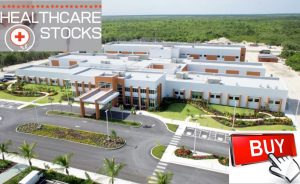
Hospital stocks are on the investors’ minds nowadays as better future prospects of these companies and an unpredictable economy have made them safe heaven bets. Reduced spending on expansion by hospitals is expected to improve profit margins and return. With a massive spurt of around 60 percent, Narayana Hrudayalaya was the best-performing hospital stock of 2019.
Descents Earnings Performance likely to be Muted over the Short-run for Narayana Hridayalaya
The Share Prices of Bengaluru-headquartered Hospital Chain Narayana Hrudayalaya has plunged 31 percent in the course of recent months. The stock fell, alongside the more extensive market, attributable to rising feelings of trepidation over the coronavirus pandemic.
While the continuous market instability warrants alert towards mid-and little top stocks specifically, it might be a smart thought to keep some stable stocks on the radar (as long as possible) in the coming weeks. Narayana Hrudayalaya appears to be all around ready to convey solid profit development as time goes on, given its brand value, asset-light model, and solid penetration in heart, renal, and different specialties.
At the present cost of ₹280, the stock price of the company is trading around 31.5 times its assessed FY2020-21 for per-share earnings; its Healthcare and medicinal services peers Apollo Hospital and Fortis Healthcare exchange at 44 times and 41 their particular FY2020-21 for per-share earnings.
Affordable Quality HealthCare Services
Narayana Hrudayalaya has a synchronized chain of 21 Hospitals clinics (multi-specialty and super-specialty healthcare facilities), six heart centers (super-specialty units), and 19 primary healthcare centers across 18 locations in India and one multi-specialty hospital in the Cayman Islands. It was established by prestigious heart specialist Dr. Devi Shetty in 2000. it is perceived as a reasonable Healthcare services supplier to the low-and middle-income populace.
As of December 2019, the Hospital network chain has around 5,770 operational beds and a limit of up to 6,579 beds. It has a decent notoriety and solid clinical capacities in heart and renal sciences.
It has been growing its center claim to fame territories to incorporate oncology, nervous system science and neurosurgery, orthopedics, and gastroenterology.
Region-wise, southern (mainly Karnataka) and eastern (mainly Kolkata) regions together account for 80% of the operating revenues (as on Financial Year 2019).
The Indian human services showcase is relied upon to develop at a quicker pace, driven by rising pay, more prominent wellbeing mindfulness, way of life ailments, and expanding access to protection. Narayana Hrudayalaya is very much ready to profit as time goes on, given its achievement in giving huge scope, top-notch tertiary consideration at reasonable costs.
Strong business model
The organization adopts a lease/management contract/revenue-share model (barring RTIICS, Kolkata, and NICS Health City, Bengaluru) It puts all his investments just in the clinical gear.
For Hospital Building structures and land, it ties up with beneficent trusts, government bodies, and other non-profit and charitable associations to set up the Hospital chain. This has empowered the organization to keep away from huge capital consumption, improve return proportions, and offer medicinal services administration at a moderate expense.
Aside from heart and renal sciences, the emergency clinic chain has been reinforcing its ability in oncology, nervous system science, neurosurgery, orthopedics, and gastroenterology. This procedure has helped the organization improve its normal income per working bed (ARPOB) to ₹90 lakh in FY19 from ₹76 lakh in FY17. Going ahead, the administration intends to build ARPOB through more day-care systems, center around high-yielding strategies, and drawing in progressively universal patients to its Bengaluru, Mumbai and Delhi Hospital chains.
Further, the clinic’s Average Length of Stay (ALOS) has diminished from 4.3 days in FY16 to 3.6 in FY19. On account of more current advancements, bringing down the ALOS empowers the organization to serve more patients with a similar foundation. This, thusly, improves the quality and build trust.
Massive Future Expansion Plans
Incomes and Margins for Hospital chains improve as their development profile progresses. For example, margins for the offices (17 Hospitals) with a development of more than five years remained at 22.7 percent in the second from last quarter of 2019-20 for the organization. Three new offices having a development of under three years revealed a negative operating profit.
Be that as it may, these new Hospital chains (SRCC, Gurugram, Dharamshila, Delhi) keep on observing a decrease in losses because of a solid increase in utilisations. The administration anticipates that these Hospital chains should accomplish breakeven (at the EBITDA level) for the most part before the finish of Financial Year 2021.
Narayana Hrudayalaya’s net debt-to-equity was 0.5 as on the second from the last quarter of 2019-20. The organization has guided for no major Capex in the following two years.
In the nine months finished 2019-20, the organization’s combined income developed by 14 percent (y-o-y) to ₹2,385 crore and net profit was up by 386 percent at ₹107 crores, driven by inhabitance improvement, decrease in losses at new Hospital Chains and lower charges. The operating profit remained at 14.3 percent during the period.
Hospital chain Narayana Hrudayalaya Ltd has been generating massive double-digit growth and stable earnings since its listing in January 2016. But its shares have been under huge pressure since the end of 2016. Now, that the company has started looking for a sustainable improvement in profitability, investors seem to be turning back to the stock. However, due to a sudden outbreak of deadly Coronavirus across the world Share price again corrected significantly around 50 percent to 52-week lows of Rs 184 from its recent all-time high of Rs 389. As I wind up this article i advise all my followers and readers to buy this stock around Rs 220-250 levels with a time horizon of 5 years and target of Rs 1500.